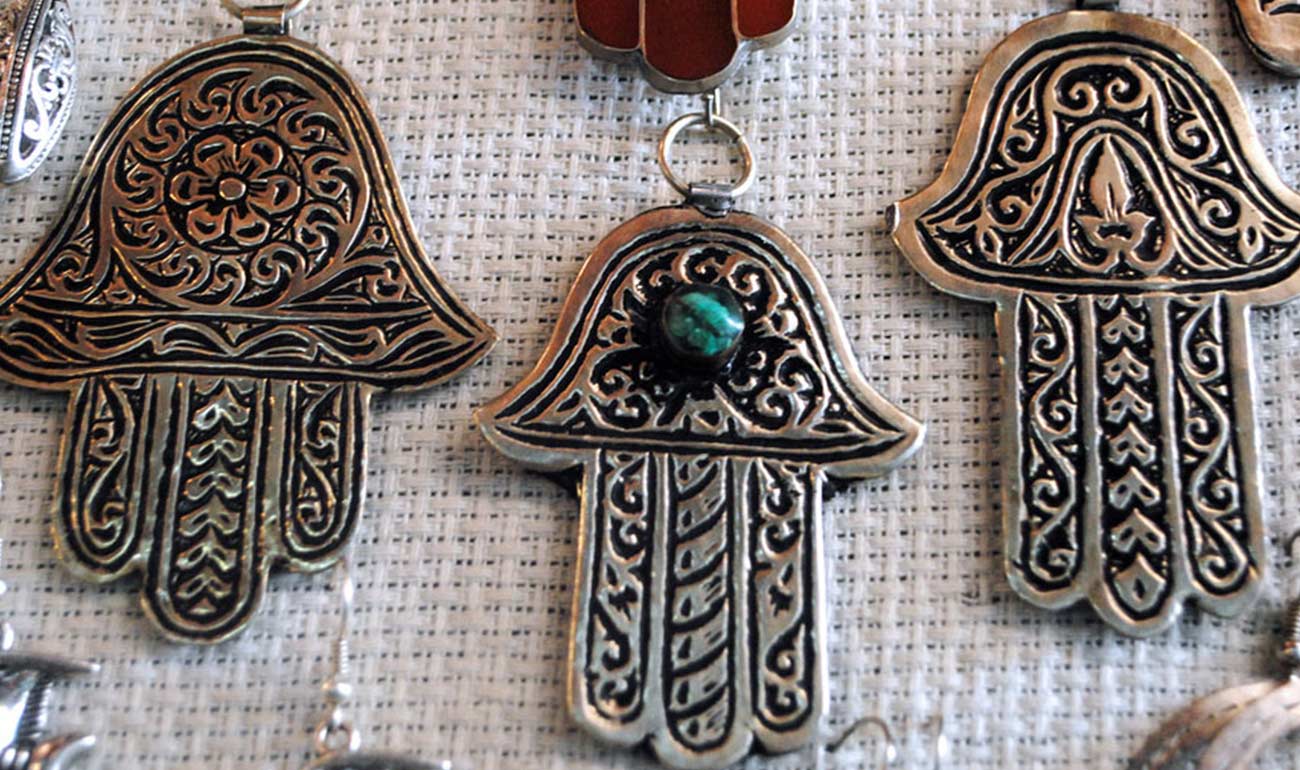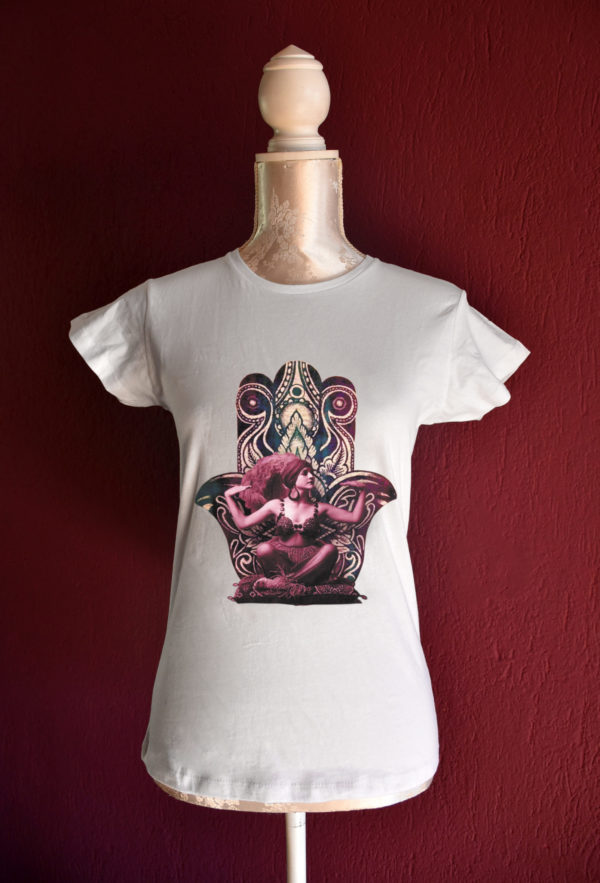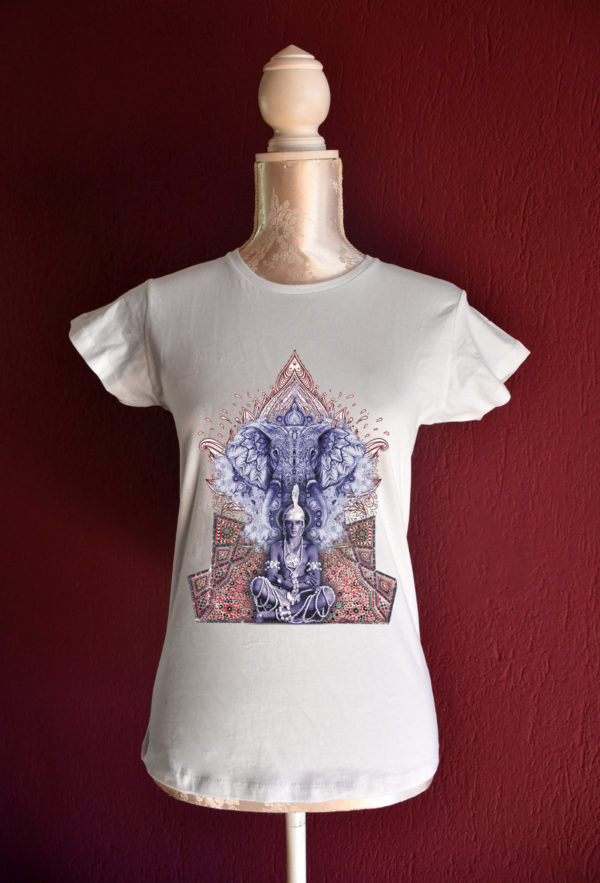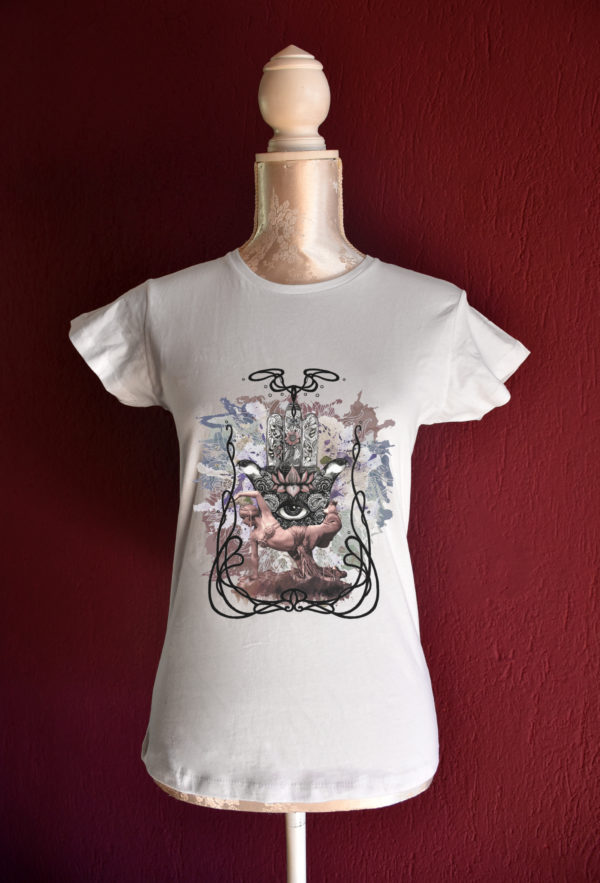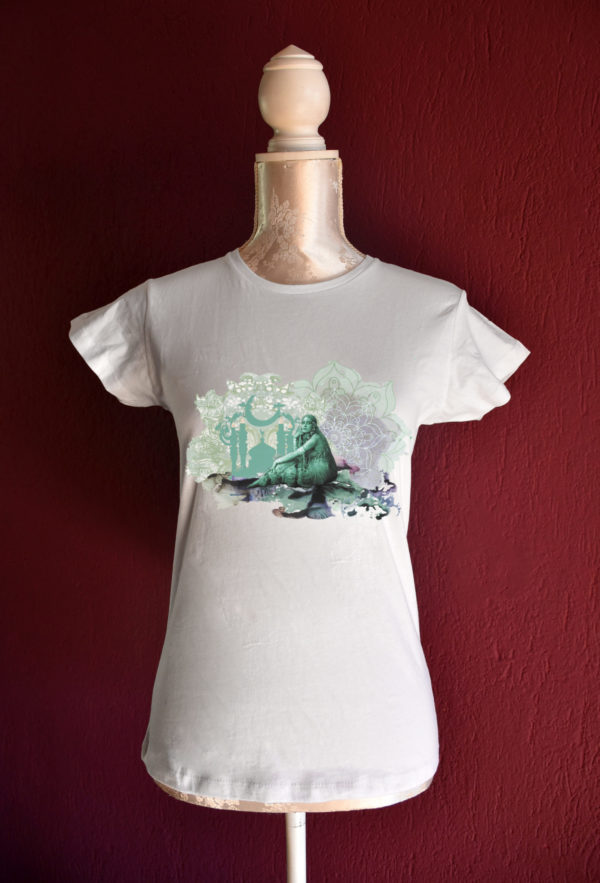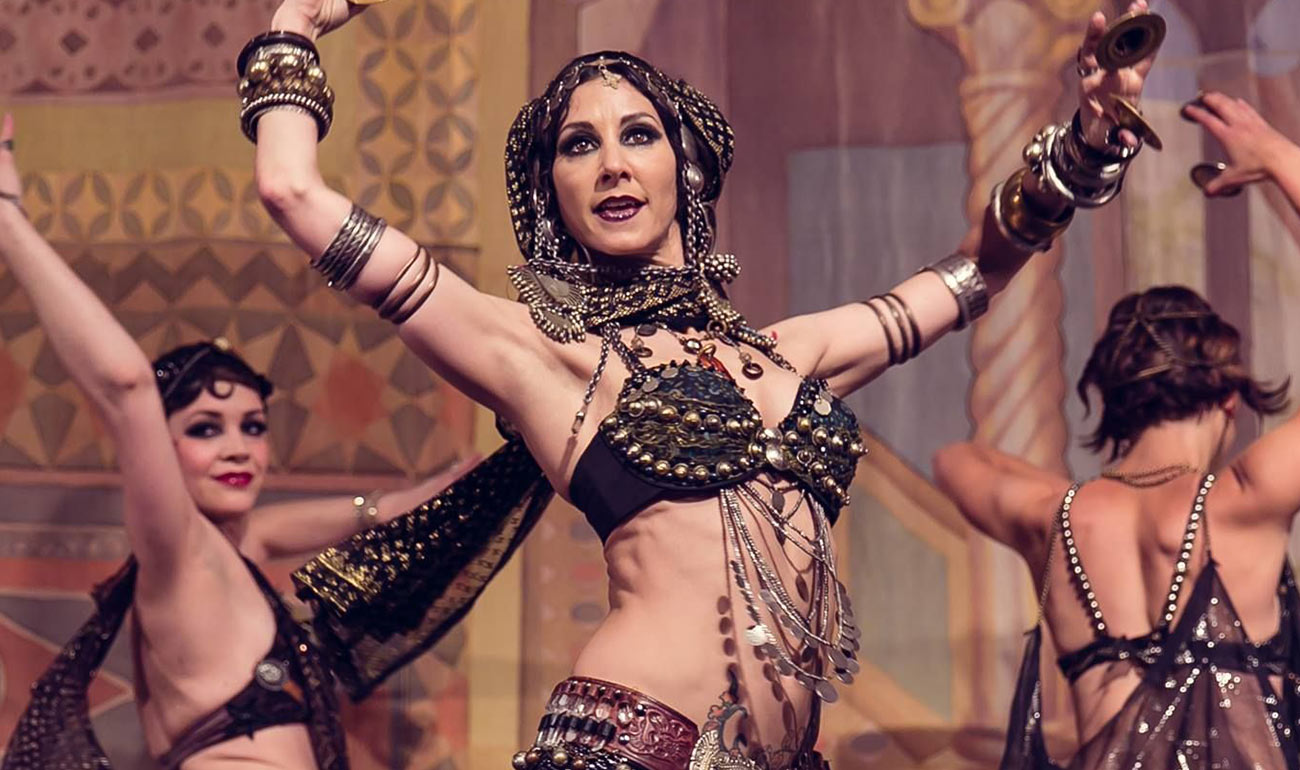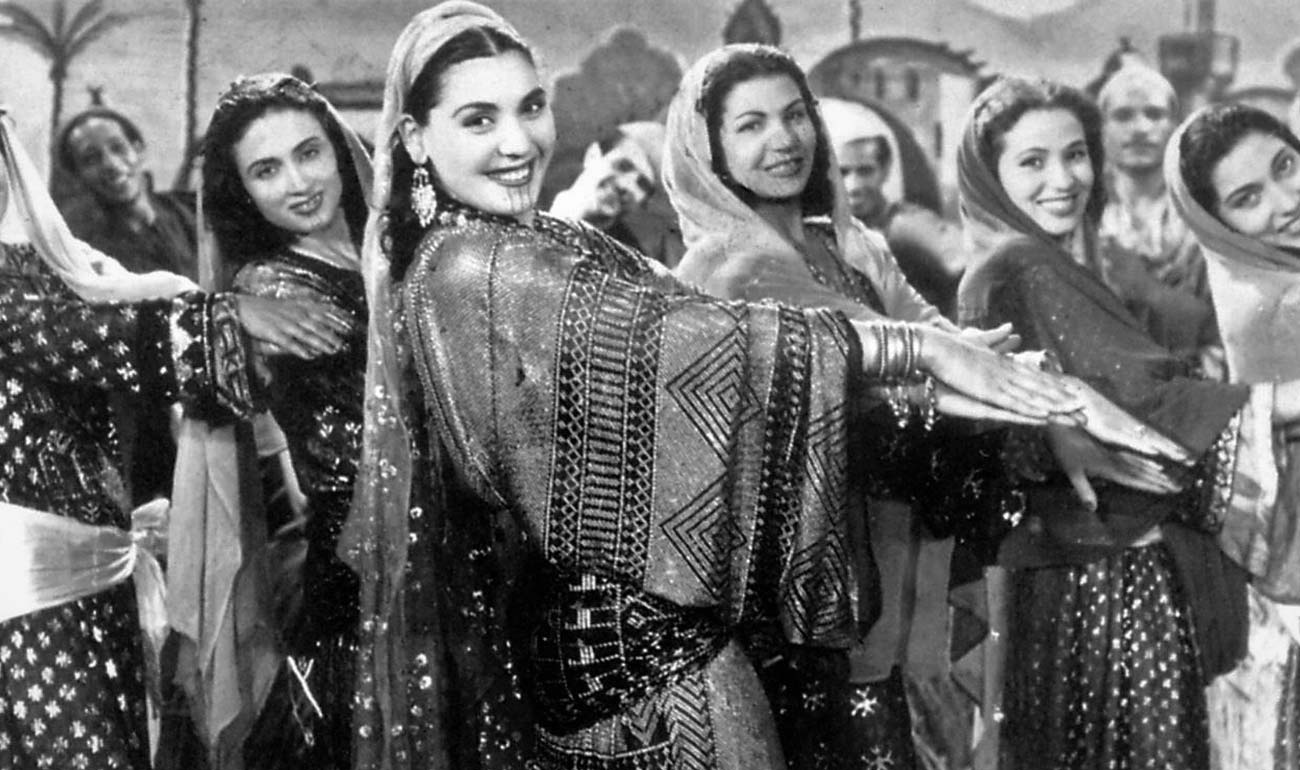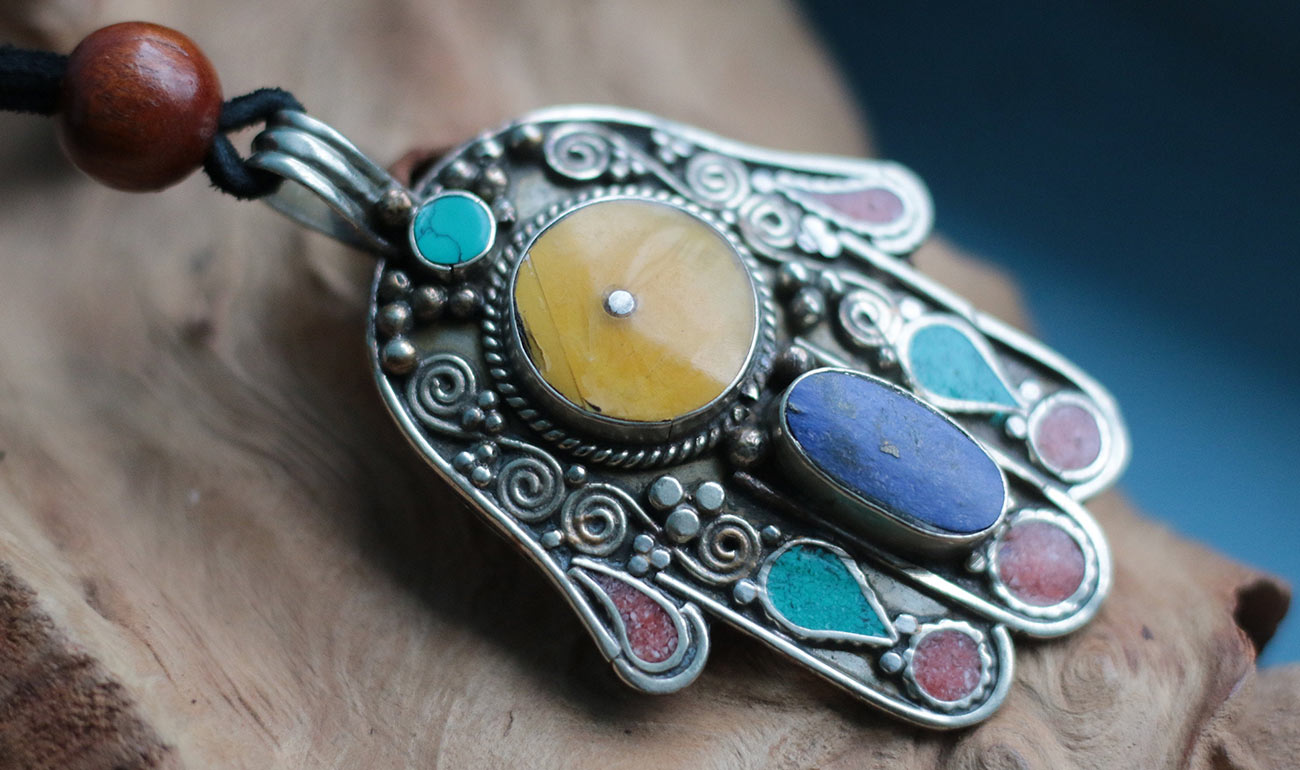
The Hand of Fatima
The Hand of Fatima, also known as the Hand of Miriam, Hamsa or Khamsa, means “five” and in the Jewish and Muslim religion has a sacred value, is a symbol attributable to the first Sumerian and Babylonian cults, first known as Inanna and then Ishtar, female divinities linked to fertility, carnal love and beauty and also to the fertility of the Earth.
This amulet has the shape of an open hand and is often used as protection from evil and evil eye, jealousy and bad thoughts, throughout the territory of North Africa and part of the Middle East.
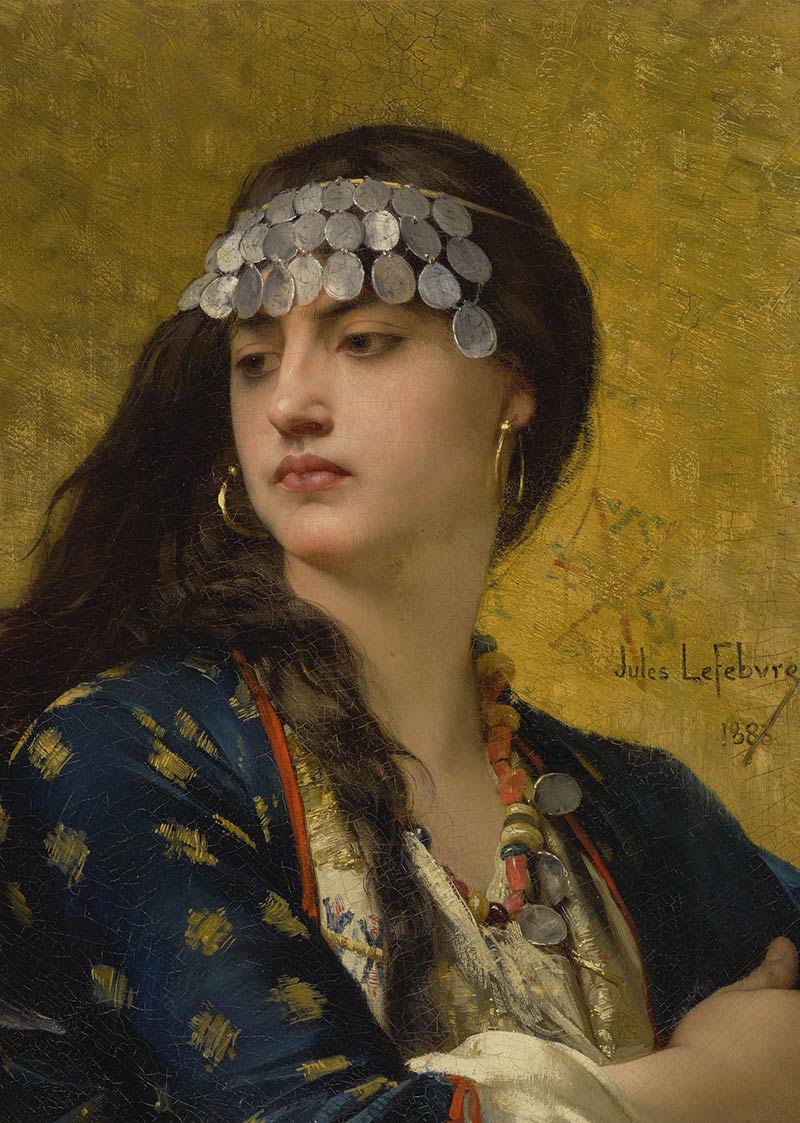
Fatima - Jules Joseph Le Febvre (1883)
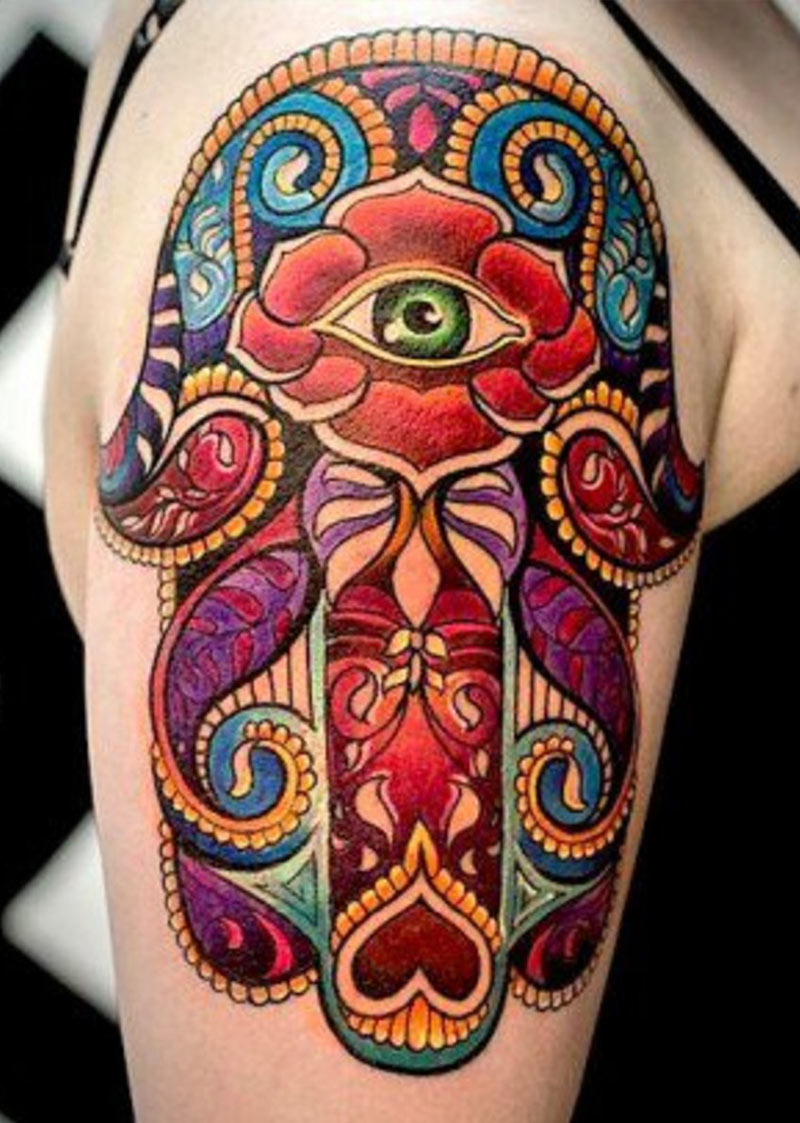
Hand of Fatima tattoo
THE HAND OF FATIMA IN VARIOUS RELIGIONS
Five is the number associated with this symbol, like the fingers of one hand, which would represent the Pillars of Islam for the Sunnis: the witness of faith, prayer, the pilgrimage to Mecca, almsgiving and fasting. For Shiite Muslims, it would also represent the five members of the sacred family: Muhammad, Fatima, Ali, Hussein and Hassan. In the Muslim version, the eye at the center of the Khamsa represents that of Allah who watches over his faithful.
For the Jews, on the other hand, this symbol is known as the Hand of Miriam, from the name of the sister of Moses and Aaron. The word “Hamsa” (or khamsa) means five, a number that, in the Muslim and Jewish religion, has a sacred value: five are in fact the venerated books of the Torah, and also recalls the fifth letter of the Hebrew alphabet, “Heh”, one of the blessed names of God. In the Hebrew version it is often possible to find a Star of David in place of the eye.
Eastern Christians also use this symbol to venerate a female divinity but have replaced the figure of Miriam, sister of Moses and Aaron, to that of the Virgin Mary.
Shop some item inspired by Artemisia
THE LEGEND
This symbol or amulet is linked to a legend, it is said that Fatima daughter of the Prophet Muhammad is the protagonist of a sincere and profound love story.
One evening while preparing dinner, Fatima sees her husband Ali come back from the window with a concubine (according to Islamic religion the husband could have up to four women with him). Deeply embittered by the arrival of this woman, she does not notice that she has dropped the wooden spoon with which she is cooking the semolina and continues to mix with her hand. Her husband asks her what she is doing and, only in that moment, she gets herself aware of the burn and the strong pain in her hand. Ali takes care of her, but then tells her that he would spend the night with the new bride.
Fatima accepts her husband’s will, but when he goes to the room with the concubine, he secretly observes them from a crack between the wooden planks of the room wall, and when she see Ali kissing his new wife, a tear falls, which falls on Ali’s shoulder, making him understand the love he feels for him and convincing him to give up the new concubine.
For Islamic women it has a very great value, it is said that by wearing this amulet they will have the gift of patience and joy, luck and wealth.
THE AMULET
In many other cultures the Hand of Fatima is also given as a lucky charm or as a symbol of God, in fact the decorations of the amulet often have an eye in the center that indicates that their god watches over them.
Normally this pendant is made of silver because it is said to be the metal of the prophet, it can be worn both with the fingers upwards and with the fingers downwards, and nowadays it is often used to indicate spaces and environments intended for female use only ; the hand can be made in three ways:
- the hand with three open fingers and two symmetrical fingers on the sides;
- the hand is represented with all five fingers open;
- the hand with the thumb raised and four fingers open (“Meknes hand”, symbol of man’s creative and fertilizing activity with the earth).
